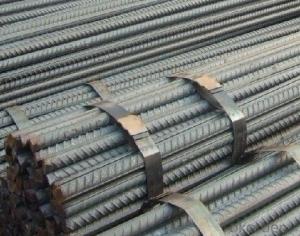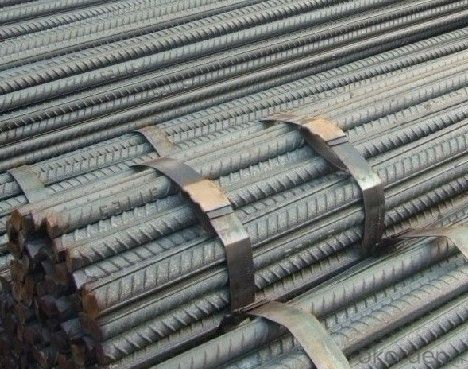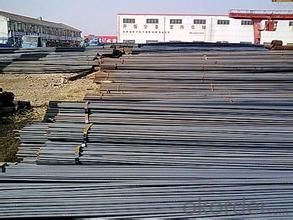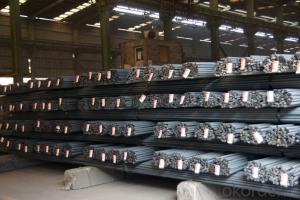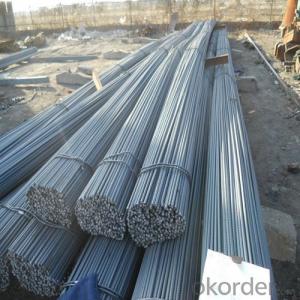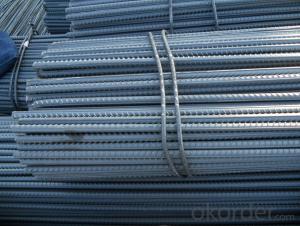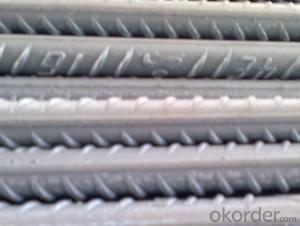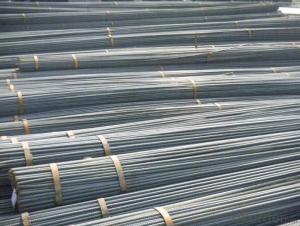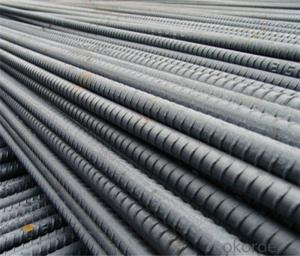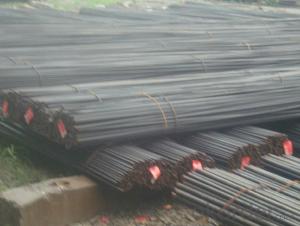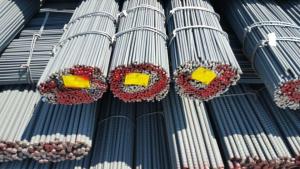S65C deformed steel bars for construction standard
- Loading Port:
- Tianjin
- Payment Terms:
- TT or LC
- Min Order Qty:
- 25 m.t.
- Supply Capability:
- 100000 m.t./month
OKorder Service Pledge
OKorder Financial Service
You Might Also Like
Product Description:
OKorder is offering S65C deformed steel bars for construction standard at great prices with worldwide shipping. Our supplier is a world-class manufacturer of steel, with our products utilized the world over. OKorder annually supplies products to European, North American and Asian markets. We provide quotations within 24 hours of receiving an inquiry and guarantee competitive prices.
Product Applications:
S65C deformed steel bars are ideal for structural applications and are widely used in the construction of buildings and bridges, and the manufacturing, petrochemical, and transportation industries.
Product Advantages:
OKorder's deformed steel bars are durable, strong, and resist corrosion.
Main Product Features:
· Premium quality
· Prompt delivery & seaworthy packing (30 days after receiving deposit)
· Corrosion resistance
· Can be recycled and reused
· Mill test certification
· Professional Service
· Competitive pricing
Product Specifications:
Specifications
1.commodity:deformed steel bars
2.grade:ASTM A615 HRB335 HRB400 HRB500 BS4449 grade460
3.size:6#-32#
4.length:6m 9m 12m
We henglong can offer high quality deformed steel bar
grade:ASTM A615 BS4449 GRADE460 HRB335 HRB400 HRB500
size:6# to 32#
length:6M 9M 12M
Chemistry % | |||||||||||||
Designation | Chief component | Impurities maxmium | |||||||||||
Ta | Nb | Fe | Si | Ni | W | Mo | Ti | Nb | O | C | H | N | |
Ta1 | Remainder | 0.004 | 0.003 | 0.002 | 0.004 | 0.004 | 0.002 | 0.03 | 0.015 | 0.004 | 0.0015 | 0.002 | |
Ta2 | Remainder | 0.01 | 0.01 | 0.005 | 0.02 | 0.02 | 0.005 | 0.08 | 0.02 | 0.01 | 0.0015 | 0.01 | |
Permissible variations in diameter for rods
Diameter, inch (mm) | Tolerance, +/-inch (mm) |
0.125~0.187 excl (3.175~4.750) | 0.003 (0.076) |
0.187~0.375 excl (4.750~9.525) | 0.004 (0.102) |
0.375~0.500 excl (9.525~12.70) | 0.005 (0.127) |
0.500~0.625 excl (12.70~15.88) | 0.007 (0.178) |
0.625~0.750 excl (15.88~19.05) | 0.008 (0.203) |
0.750~1.000 excl (19.05~25.40) | 0.010 (0.254) |
1.000~1.500 excl (25.40~38.10) | 0.015 (0.381) |
1.500~2.000 excl (38.10~50.80) | 0.020 (0.508) |
2.000~2.500 excl (50.80~63.50) | 0.030 (0.762) |
For more details please go to our website, and welcome to China to visit our company.
Special requirements to be agreed on by the supplier and buyer of negotiation.
Note:
1. Our products are produced according to national standard (GB), if not, supply according to national standards (GB) or agreement as customer required.
2. Other Grade and Standard Deformed Steel Bar we can supply:
Grade: GR40/GR60, G460B/B500A/B500B/B500C,BST500S
Standard: ASTM, BS, DIN
The Minimum Order Quantity of these products is high, and need to be confirmed.
3. We can not only supply Deformed Steel Bar; if you need anything about building materials, please contact us for further information.
4. Please send us your detail specifications when inquire. We will reply to you as soon as possible. We sincerely hope we can establish a long stable business relationship.
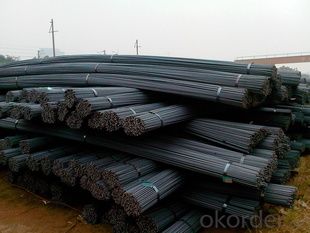
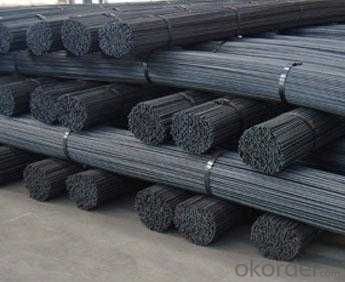
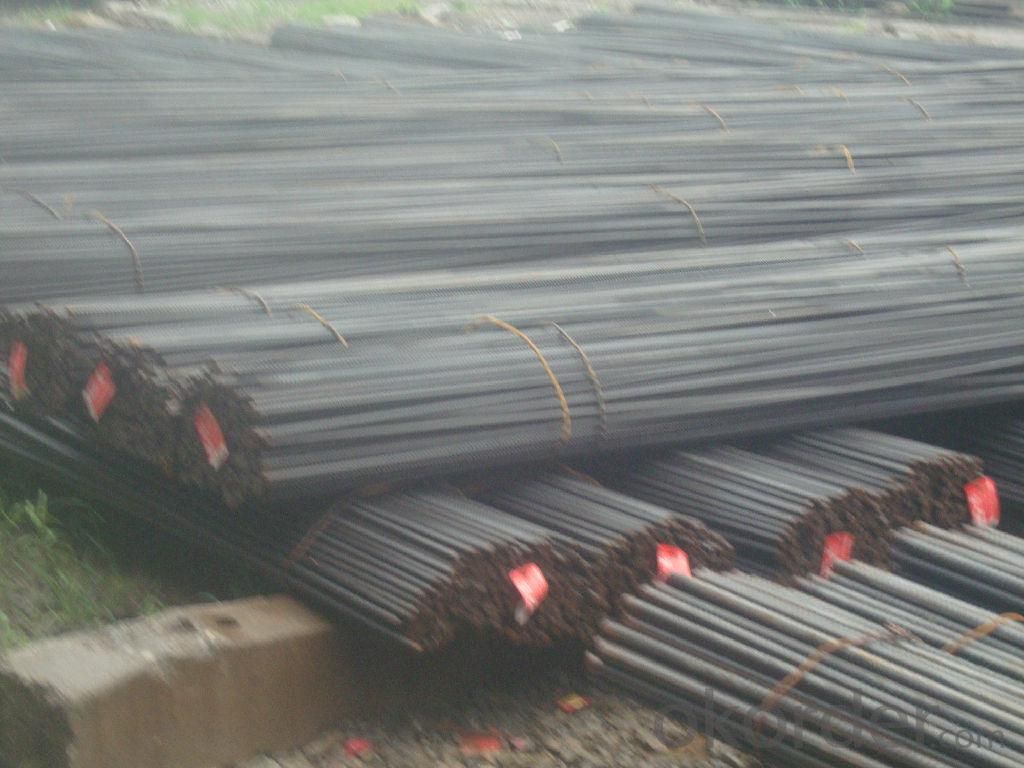
FAQ:
Q1: What makes stainless steel stainless?
A1: Stainless steel must contain at least 10.5 % chromium. It is this element that reacts with the oxygen in the air to form a complex chrome-oxide surface layer that is invisible but strong enough to prevent further oxygen from "staining" (rusting) the surface. Higher levels of chromium and the addition of other alloying elements such as nickel and molybdenum enhance this surface layer and improve the corrosion resistance of the stainless material.
Q2: Can stainless steel rust?
A2: Stainless does not "rust" as you think of regular steel rusting with a red oxide on the surface that flakes off. If you see red rust it is probably due to some iron particles that have contaminated the surface of the stainless steel and it is these iron particles that are rusting. Look at the source of the rusting and see if you can remove it from the surface.
- Q: Can steel rebars be used in structures with high vibrations?
- Yes, steel rebars can be used in structures with high vibrations. Steel rebars are commonly used in construction due to their high tensile strength and ability to withstand various forces, including vibrations. However, it is important to consider the specific requirements and design parameters of the structure to ensure that the rebars are properly anchored and reinforced to withstand the anticipated vibrations.
- Q: How do steel rebars affect the overall load distribution of concrete structures?
- Steel rebars significantly affect the overall load distribution of concrete structures by providing tensile strength and reinforcing the concrete. The rebars absorb and distribute the applied load throughout the structure, reducing the risk of cracking and enhancing the structural integrity. Without rebars, concrete structures would be more prone to failure under heavy loads or external forces.
- Q: Can steel rebars be used in road or highway construction?
- Yes, steel rebars can be used in road or highway construction. They are commonly used to reinforce and strengthen concrete structures, including roads and highways, to enhance their durability and load-bearing capacity. Steel rebars provide stability and prevent cracking or breaking under heavy traffic loads, making them an essential component in road and highway construction.
- Q: How do steel rebars affect the overall crack width of concrete structures?
- Steel rebars can significantly reduce the overall crack width of concrete structures. By reinforcing the concrete, rebars help distribute and resist tensile forces, preventing cracks from widening or forming in the first place. This reinforcement enhances the structural integrity and durability of the concrete, ensuring it can withstand external loads and environmental factors.
- Q: What is the process of anchoring steel rebars in masonry walls?
- To ensure a secure and reliable connection between the steel reinforcement and the masonry structure, several steps are involved in anchoring steel rebars in masonry walls. Firstly, a detailed design and plan for the reinforcement layout in the masonry wall must be established. This involves determining the spacing, size, and placement of the rebars based on structural requirements. Next, the masonry wall needs to be prepared by cleaning the surface and removing any loose debris or obstructions. This creates a clean and stable base for the rebars. Then, holes are drilled into the masonry wall at predetermined locations according to the reinforcement design. These holes are slightly larger than the diameter of the rebars to allow for easy insertion. After drilling, the holes are cleaned to remove any dust or debris. A bonding agent, such as epoxy or cementitious grout, is then applied to the holes. This enhances the bond between the rebars and the masonry wall. The steel rebars are then inserted into the prepared holes, ensuring alignment according to the reinforcement design. They are pushed into the holes until they reach the desired depth, fully embedding them in the bonding agent. Once the rebars are in place, the bonding agent needs time to cure and harden. The curing time varies depending on the type of bonding agent used and the environmental conditions. It is crucial to follow the recommended curing time to ensure secure anchoring. After the curing process is complete, a thorough inspection is conducted to ensure the rebars are properly anchored and meet the required specifications. This involves checking for proper alignment, depth, and overall stability. By following these steps, the process of anchoring steel rebars in masonry walls provides structural reinforcement and strength to the overall masonry structure. This enhances durability and resistance to various forces and loads.
- Q: Can steel rebars be used in structures with curved or irregular shapes?
- Structures with curved or irregular shapes can indeed utilize steel rebars. Owing to their remarkable flexibility, steel rebars can be easily bent or molded to accommodate the desired structure form. They find extensive application in reinforced concrete structures, where architectural or structural design calls for curved or irregular shapes. Typically, the rebars are bent or trimmed as per the required configuration and then firmly fastened in position to impart robustness and reinforcement to the structure. Consequently, this facilitates the construction of intricate structures with sophisticated designs, all while guaranteeing their steadfast structural integrity and longevity.
- Q: How do steel rebars contribute to the structural integrity of a building during earthquakes?
- Steel rebars, or reinforcement bars, play a crucial role in enhancing the structural integrity of a building during earthquakes. These steel bars are strategically placed within the concrete components of the building, such as columns, beams, and slabs, to provide additional strength and resistance against seismic forces. By effectively reinforcing the concrete, rebars help to distribute the load evenly, minimize cracking and prevent the collapse of the structure. They enhance the overall stability, stiffness, and ductility of the building, allowing it to better withstand the dynamic and destructive forces generated by earthquakes.
- Q: How do steel rebars contribute to the sustainability of a building?
- There are several ways in which steel rebars contribute to the sustainability of a building. To begin with, the utilization of steel rebars in reinforced concrete structures enhances the overall strength and durability of the building, thus extending its lifespan. This, in turn, reduces the frequency of repairs or replacements, resulting in less material consumption and waste generation over time. Moreover, steel rebars are manufactured from recycled materials, with a significant proportion being derived from scrap metal. This helps to decrease the demand for new steel production, which is an energy-intensive process and contributes to carbon emissions. By making use of recycled steel rebars, buildings can significantly reduce their carbon footprint and conserve natural resources. Furthermore, steel rebars aid in improving the structural integrity of the building, making it more resistant to various external forces such as earthquakes, hurricanes, and other natural disasters. This increased resilience decreases the potential for catastrophic damage and the subsequent need for major reconstruction or demolition, thus saving both resources and costs. Additionally, the utilization of steel rebars allows for the construction of taller and more open spaces, enabling efficient use of the building's footprint. This is particularly relevant in urban areas where land availability is limited. By enabling the construction of taller buildings, steel rebars contribute to urban densification, which helps to reduce urban sprawl and preserve natural habitats. Lastly, steel rebars are highly recyclable at the end of their service life. When a building is demolished, the steel rebars can be easily extracted and recycled, avoiding the accumulation of construction waste in landfills. The recycling of steel rebars saves energy and reduces the need for extracting and processing new materials, further contributing to the sustainability of the construction industry. In conclusion, steel rebars play a crucial role in enhancing the sustainability of a building by increasing its durability, utilizing recycled materials, improving structural resilience, enabling efficient land use, and facilitating the recycling of materials at the end of a building's life cycle.
- Q: Can steel rebars be used in foundation construction?
- Yes, steel rebars can be used in foundation construction. They are commonly used as reinforcement to provide strength and stability to concrete foundations, ensuring durability and resistance to structural loads.
- Q: How are steel rebars cut to specific lengths?
- Steel rebars are cut to specific lengths using a variety of tools and techniques such as hydraulic shears, cutting torches, or circular saws equipped with abrasive blades. These tools allow for precise and accurate cuts to be made, ensuring that the rebars meet the required specifications for construction projects.
Send your message to us
S65C deformed steel bars for construction standard
- Loading Port:
- Tianjin
- Payment Terms:
- TT or LC
- Min Order Qty:
- 25 m.t.
- Supply Capability:
- 100000 m.t./month
OKorder Service Pledge
OKorder Financial Service
Similar products
Hot products
Hot Searches
Related keywords
